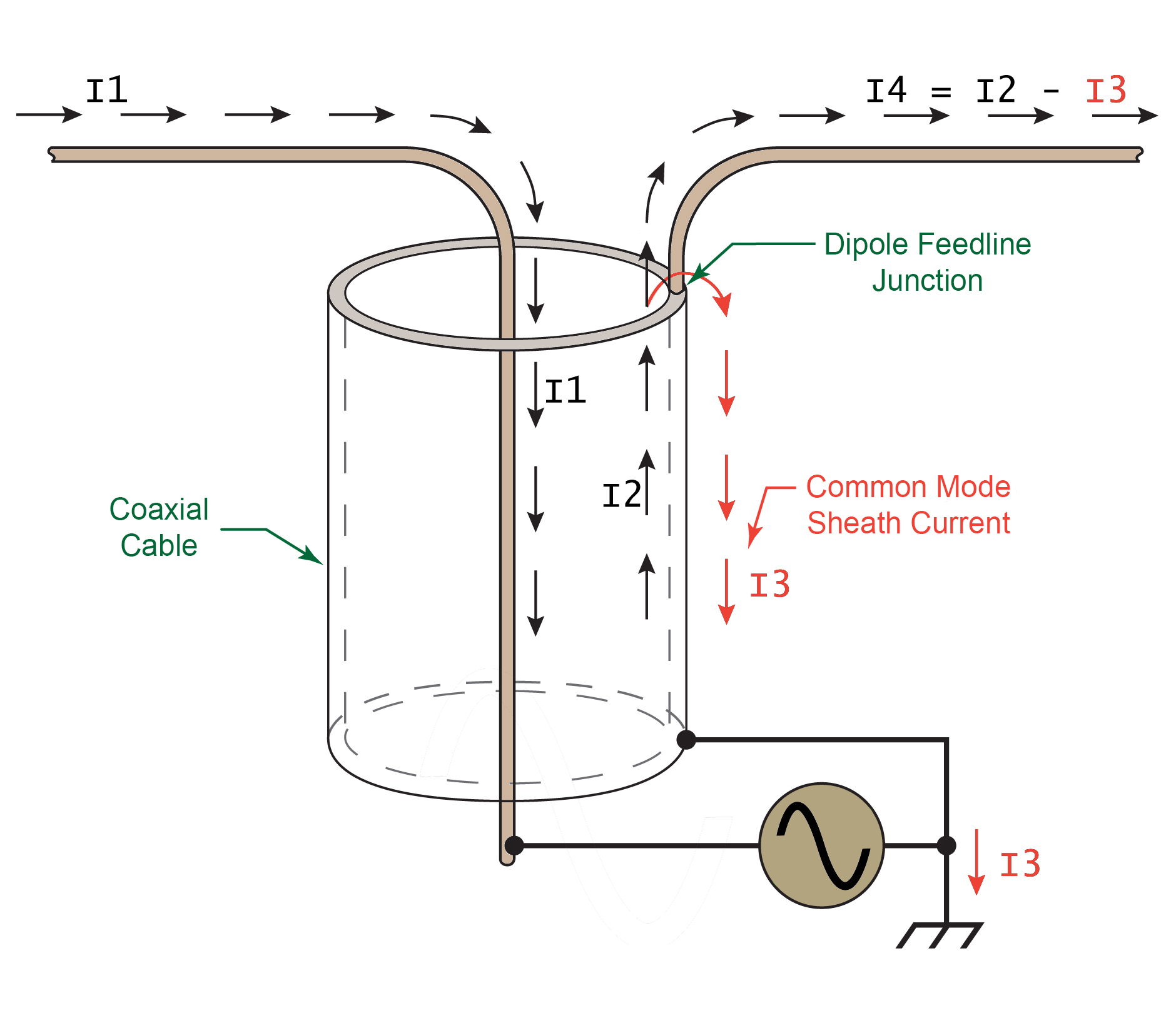SWBC – Sheath Wave Blocking Cable
|
Sheath waves are a form of (mostly unwanted) conducted and/or radiated electromagnetic waves on the outer conductor (or sheath) of a coaxial cable. Those are caused by asymmetries at the feeding point of the used antenna (see block diagram of dipole antenna). The ground return is provided by the grounding of the measurement environment. Sheath waves can also arise from mismatching and induction of the actual transmission signal at the coaxial shield. Due to the unwanted emission of electromagnetic waves, sheath waves interfere with EMC measurements. Additionally, differences in the ground potential between the two ends of a coaxial cable, standing waves lead to common-mode signals, which are superimposed on the transmission signal as interference voltage and may cause hum loops.
High-frequency sheath waves on coaxial cables can e.g. – like with our special cable – be suppressed by ferrite cores. These act as current-compensated chokes or common-mode chokes. At the same time, the ferrites act as a transformer, so that the original transmission signal is protected as a differential-mode signal.
|

|
Typical Application: Mobile testing
- ISO 11451-3 Road vehicles test – Part 3: On-board transmitter simulation
- ISO 11452-9 Road vehicles – component test – Part 9: Portable transmitters
Datasheet |
Application Note |

